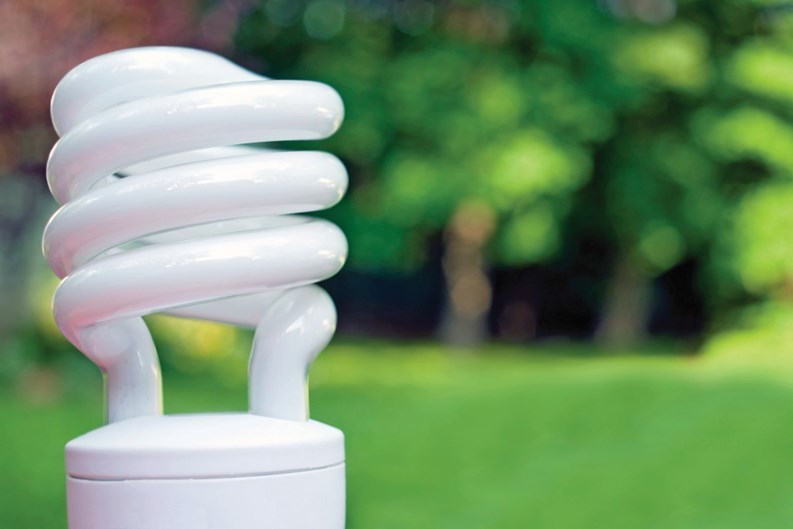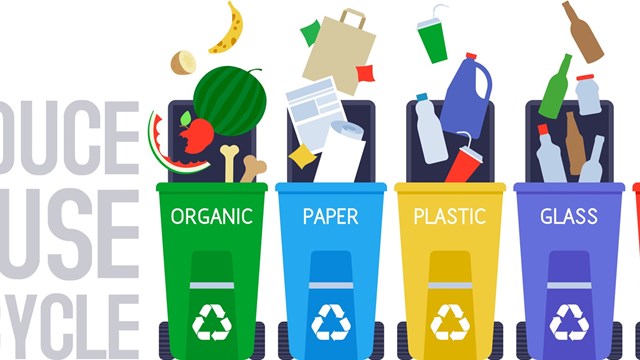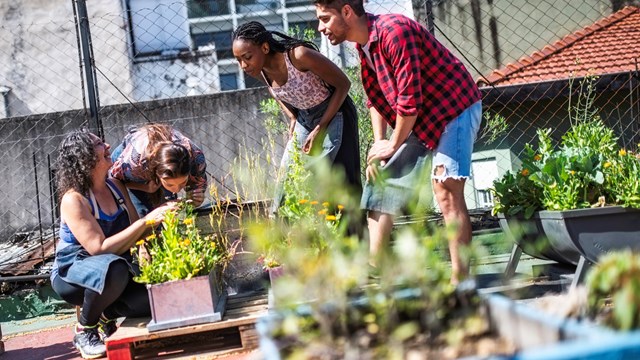Keeping up with soaring energy costs has nearly everyone scrambling to make some changes. Unit owners are driving less, turning out lights, and keeping a close eye on the thermostats.
But when it comes to reducing energy use and enacting conservation measures at the condominium level, the board itself and property manager have a chance to exert the biggest impact.
Due to their leadership positions and power over purchases and practices, green-leaning leadership can make all the difference at a condominium.
While the idea of adopting greener practices at the condominium has a natural constituency, the truth is that green practices may not receive overwhelming support until all residents can see some sort of financial gain.
Ellen Kaplan, property manager at Whittier Place in Boston, admits that while making changes that “are ecologically sound is a good thing in and of itself, we are also constantly looking at ways to save money. It’s the return on investment that really gets everyone’s attention.” As a property manager, it is one of her tasks to come up with projects that hopefully, will accomplishboth: “You’ve got to make a good case to your board members both fiscally and environmentally in order to get things to happen.”
Fortunately, in many cases, one is not gained at the expense of the other. Going green very often saves money, and when done with careful planning and organization, can sometimes even make money. Blair Galinsky, an owner and developer of Forbes Park in Chelsea, Massachusetts, has no end of ideas to make this new and ongoing project not just an ideal model for sustainable living, but to serve as an inspiration to other properties lookingto move toward greener pastures.
Opportunities to go green exist everywhere, says Galinsky, from the grass growing in outdoor areas to the rooftops overhead. “Much of this is about creating a certain set of values,” he explains. “Those values rest in a commitment honored by both the developers and the residents to be active and enthusiastic participants in the sustainable living process.
This mixed-use development project is utilizing a wide range of green practices, from wind turbines to building with recycled materials, solar panels to the reclamation of many acres of contaminated wetlands.”
One of the goals, says Galinsky, is to re-create a shoreline ecology that will mirror what it was three centuries ago, while embracing the latest technologies to operate a very modern complex.
Challenges for Older Buildings
For most of us, though, the reality is that both our existing structures and their inhabitants are not as ready and equipped to achieve such lofty standards as Forbes Park has accomplished. Older buildings often present challenges to a higher level of eco-friendliness; in new construction or massive renovation, that kind of ultra-greenconsciousness is an integral part of the building design itself.
When not starting from scratch, chances for implementing significant green changes can come slowly, hatching out during repair and maintenance schedules or through specific project initiatives. In her ongoing research to bring Whittier Place into a more modernand greener time, Kaplan has already discovered that the building’s design and location have negated the use of both solar panels and wind turbines as a means of generating power.
The lifestyle of an association’s residents can also serve to impede or propel green performance. Ideally, residents should be active players in the community’s happenings, eager to spearheadrecycling programs, ridesharing, or some other activity geared to bring residents together for a good cause.
Many times, though, says Kaplan, “They’re just too busy. Most are professionals who aren’t home much. It’s harder to get them involved.” Kaplan relies on the community’s twice-yearly newsletter and the mass postings of fliers to inform residents of happenings. Kaplan also tries to respond to trends in the building: she has seen a huge increase in bicycle use among residents and is now looking to provide additional bike racks on the property.
Often, greener changes are happening by the residents’ own initiative. A bathroom renovation might include the installation of a low-flow toilet (mandated by building codes), and with it, an impressive savings of water. According to the Federal Energy Management Program, switching to a standard low-flush toilet (1.6 gallons per flush) will reduce one person’s annual water use from 27,300 gallons to 12,500 gallons. At Whittier Place, residents are offered an opportunity to save significant costs for window upgrades, where higher participation means greater savings.
Renovations Offer Green Opportunities
Major renovation projects are ideal avenues through which to take advantage of the latest technologies that not only will save money for your association in the long run, but also are also ecologically responsible. Colleen Ryan Soden, a green building consultant with The Green Roundtable, Inc. in Boston, says to think of these major improvements as “making a tighter envelope” of your building. Take the time to research and find the best upgrades for insulation, roofing materials, windows, and siding that will improve energy efficiency and cut downon future heating and cooling costs.
More and more residential communities are converting their burner systems over to those that work through the process of cogeneration for their energy needs. Cogeneration — also known as combined heat and power (CHP) — is the simultaneous production of heat and power from a single fuel source. The process uses heat that is otherwise discarded from conventional power generation to produce thermal energy, which then can be used to provide cooling or heating. According to Cogeneration Technologies, a Texas-based company based specializing in renewable energy, “By recycling this waste heat, cogeneration systems achieve typical effective electric efficiencies of 50% to 70% — a dramatic improvement over the average 33% efficiency of conventional fossil-fueled power plants. Cogeneration systems can produce savings of up to 40% on energy expenses, while also greatly reducing air emissions of nitrous oxides, sulfur dioxide, mercury, particulate matter, and carbon dioxide, the leading greenhouse gas associated withclimate change.”
While making changes for a healthier environment may seem daunting to some, there is no shortage of available resources to help make effective decisions, come up with suitable plans and goals, and put them into practice. Soden and others at The Green Roundtable work to help builders, developers, and property managers take a more environmentally-friendly approach to their operations. “We look at a company’s intentions and goals and then look toward policy development,” says Soden. “There are lots of challengesin creating more green and healthy environments; it’s all about making a change in mindset. But even little changes can have big impacts.”
Maintenance Practices
Soden suggests looking into your association’s maintenance practices. Sprinkler systems running on timers do little to better the landscape and a lot to waste valuable water resources. Consider smarter irrigation that loses less water to evaporation and isn’t turning on automatically, despite last night’s generous rainstorm. Take a look at the cleaning supplies used by maintenance personnel and opt for productsthat are gentler on the environment. Keeping trash and waste areas clean and organized not only encourages residents to recycle properly, it also keeps pest problems at a minimum.
One of the easiest ways to make a big impact, says Kaplan, is to switch tocompact fluorescent light bulbs. This project has so far been the simplest to accomplish and manage in the aging complex of two towers, housing just under 500 units.
The long-lasting and money-saving bulbs were used throughout the parking garage, basement and trash areas. These bulbs have to be recycled (they contain small amounts of mercury and should not be thrown in the regular trash), so to encourage residents to use these bulbs within their units, special recycling bins will be placed in the trash rooms.
A community association’s utility providers are also an excellent place to start, say both Soden and Galinsky. There are many free and subsidized programs available through the major utility companies designed to improve energy efficiency and provide valuable savings to customers. Company representatives will come to your property and conduct an energy audit, complete with ideas and strategies to save money and increase efficiency. Many companiesalso offer ample rebates for switching to products that are more efficient.
Soden also recommends that property managers look to LEED (Leadership in Energy and Environmental Design) as a means to measure what they are currently doing, while also using the criteria to continue to lessen their environmental impact. Offered as a standard of reference, the LEED for Existing Buildings: Operations & Maintenance is an excellent beginning resource for associations looking for ways to run their properties more efficiently while also increasing their overall green performance. According to its author, the U.S. Green Building Council, this set of guidelines “provides a road map for property managers, portfolio owners and service providers who wish to drive down operating costs while increasing occupants’ productivity in an environmentally responsible manner.” Topics covered in this 80-plus-page document include all aspects of management, from building exterior and site maintenanceto energy and water use, waste management, recycling programs, pest and landscape management, and environmentally-preferred products.
Using a specific set of standards, the LEED program operates on a rating system, providing “certification and recertification of building operations to recognize owners’ ongoing achievements.” While it is entirely voluntary, there are certain requirements necessaryto apply for certification, such as adherence to federal, state and local environmental laws and regulations.
Be Proactive
With increased awareness, more and more options are becoming available to those who want to make some environmentally responsible changes. “You’ve got to be proactive about it,” says Kaplan. “Don’t stop asking your contractors, your service providers, your utility companies, for new ways to save money and energy. Request energy audits to see where you can be doing something better. There is always new technology to take advantage of, as long as you’re willing to look for it. Look for projects that are easy to manage and will be of interest to residents.”
It’s more than a full-time job, but one that sees profitable payouts in numerous ways. “Sustainable building practices are the trend of the future,” says Galinsky. “It’s a smart investment for a lot of reasons. Many of the LEED guidelines will likely be required in the future, so those who are getting an early start will be better off in the long run.” And, he adds, those who make the effort and spend the money for green improvements will find that the marketability of the condominium will increase as well – yet another reason for community leaders to take the lead in getting their homeowner associationon the green bandwagon.
Laura V. Scheel is a freelance writer for New England Condominium magazine.







Leave a Comment